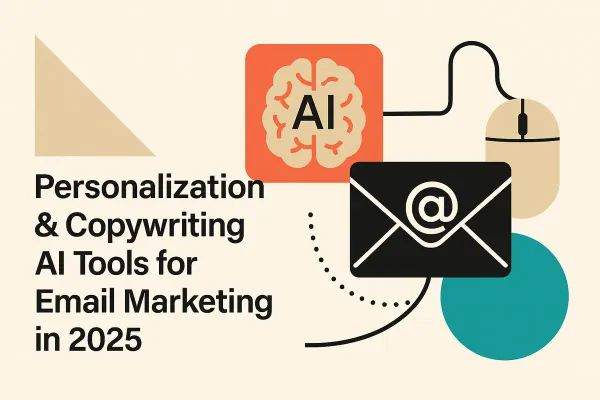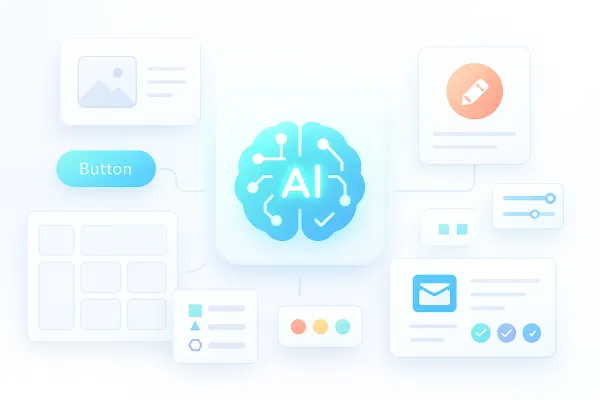Email Marketing Automation for 2025 (Complete Guide)
Master email marketing automation in 2025 with proven strategies. Complete guide with ROI-boosting tactics and expert frameworks.
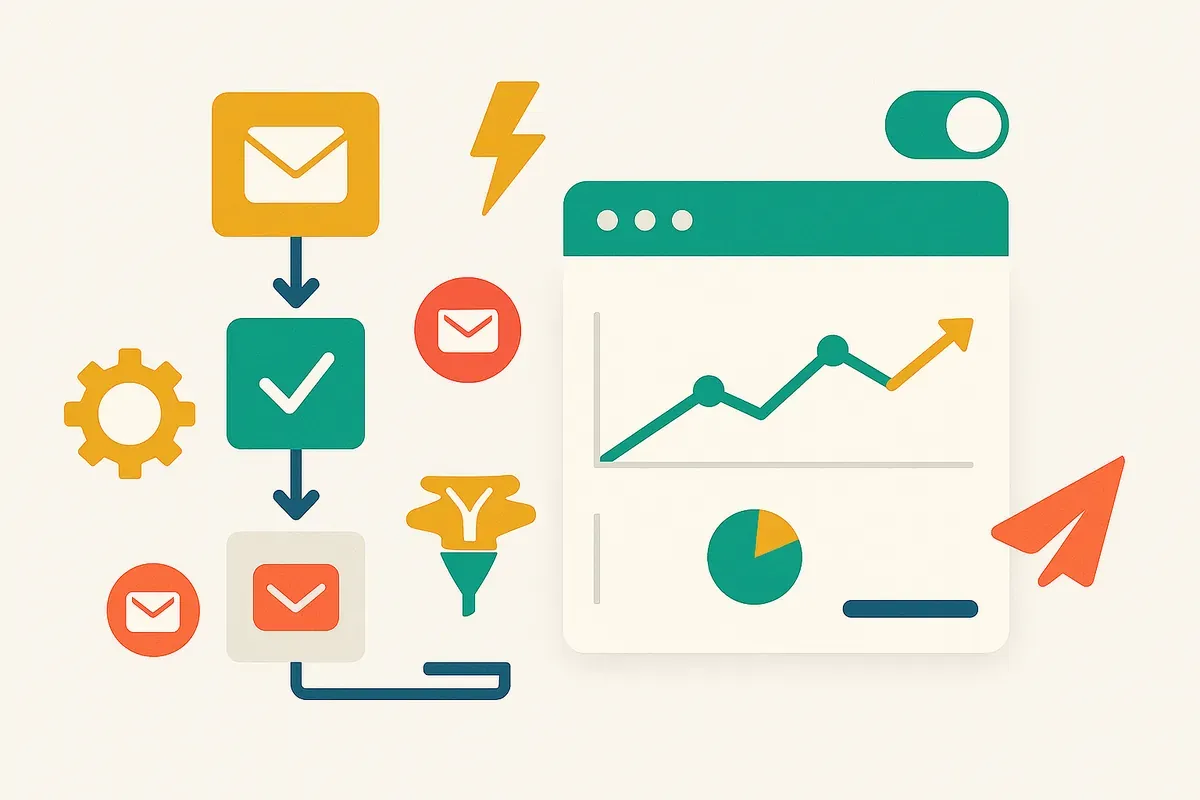
💰 Revenue Impact: Companies using email marketing automation see 320% more revenue than those sending broadcast emails, with automated campaigns generating $5.31 for every dollar spent according to Litmus 2024 research.
Email marketing automation has evolved from a nice-to-have feature into the backbone of successful digital marketing strategies. Yet 73% of businesses still struggle to implement effective automated campaigns that actually drive results.
The problem isn't lack of tools—it's knowing how to orchestrate the right message, timing, and triggers to create seamless customer experiences that convert. Modern consumers expect personalized, timely communication that feels human despite being automated.
Quick Value Delivery: Your Email Automation Success Framework
💡 Pro Tip: The most successful email automation strategies focus on customer lifecycle stages rather than random promotional blasts.
This comprehensive guide delivers everything you need to master email marketing automation in 2025. You'll discover proven frameworks, implementation strategies, and optimization techniques that top-performing brands use to drive revenue growth.
What You'll Learn:
- Complete automation strategy development process
- Advanced triggering and segmentation techniques
- ROI optimization methods that boost conversions by 40%+
- Common pitfalls that kill campaign performance
- Future-ready automation trends for competitive advantage
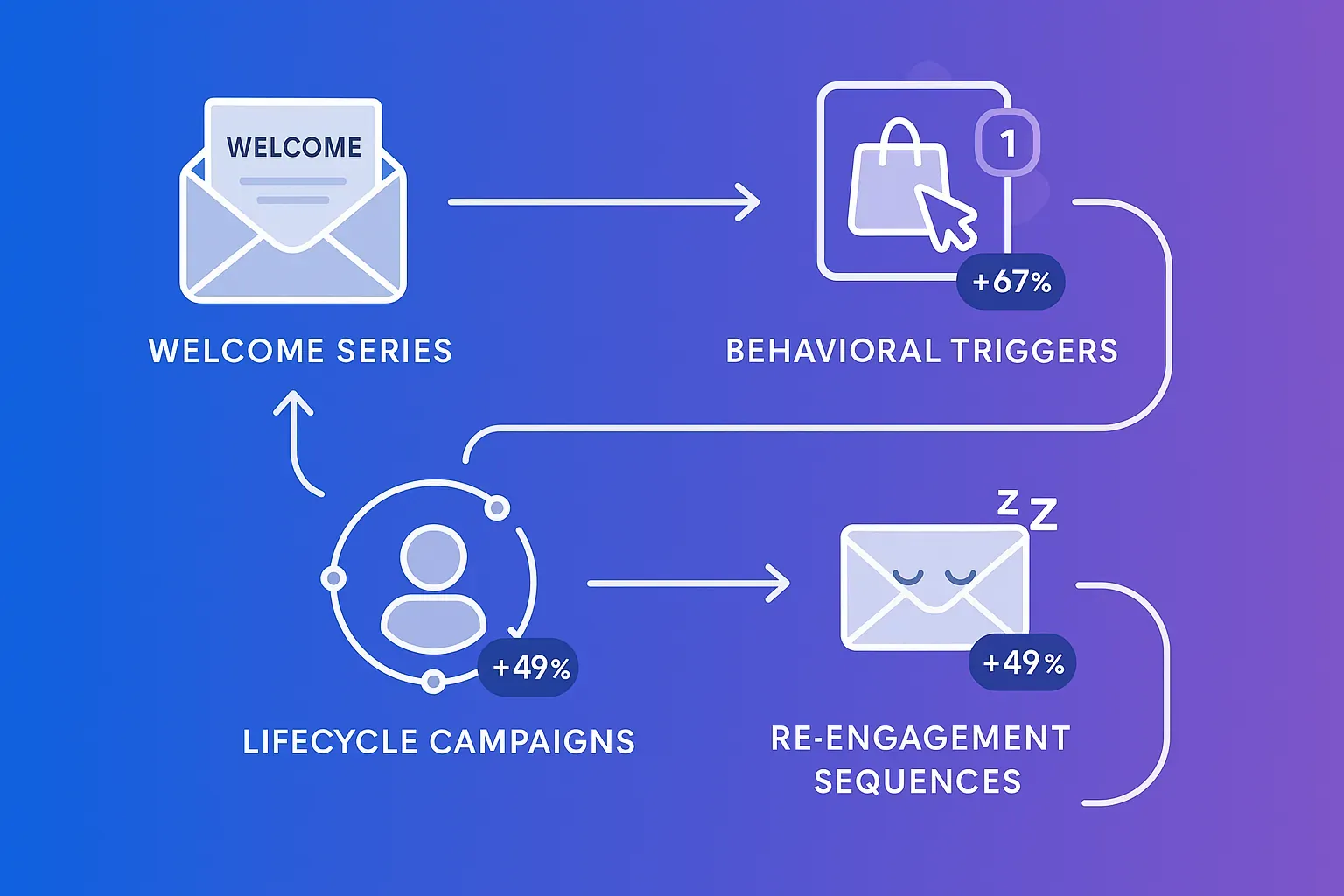
Whether you're starting from scratch or optimizing existing campaigns, these battle-tested strategies will transform your email marketing results within 30 days.
Understanding Email Marketing Automation in 2025
Email marketing automation refers to the technology and processes that send targeted, personalized emails to subscribers based on predefined triggers, behaviors, or time intervals. Unlike broadcast emails sent to entire lists, automated campaigns deliver the right message to the right person at precisely the right moment.
The automation landscape has dramatically evolved. Modern platforms now integrate artificial intelligence, predictive analytics, and cross-channel data to create sophisticated customer journey maps that adapt in real-time.
Core Components of Modern Automation:
| Component | Function | Impact on Performance |
|---|---|---|
| Behavioral Triggers | Actions that start email sequences | 75% higher open rates |
| Dynamic Segmentation | Real-time list updates based on data | 58% increase in revenue |
| Personalization Engine | Content customization per subscriber | 29% boost in unique opens |
| Analytics Integration | Performance tracking and optimization | 41% improvement in ROI |
💰 Revenue Impact: Automated email campaigns account for 21% of email marketing revenue, despite representing only 2% of total email volume, according to Epsilon's 2024 Email Trends report.
The most successful businesses treat email automation as a complete customer experience system rather than isolated marketing messages. This shift in perspective unlocks exponential growth opportunities that competitors miss.
Essential Email Automation Types That Drive Results
Welcome Series Automation
Welcome series represent your first impression and typically generate 320% more revenue per email than promotional campaigns. A strategic welcome sequence introduces your brand, sets expectations, and guides new subscribers toward their first purchase.
Optimal Welcome Series Structure:
- Email 1: Immediate confirmation and brand introduction (Send within 1 hour)
- Email 2: Value delivery with free resource or exclusive content (24 hours later)
- Email 3: Social proof and customer testimonials (3 days later)
- Email 4: Product recommendations based on signup source (7 days later)
- Email 5: Special offer or incentive to purchase (14 days later)
Groupmail's drag-and-drop builder makes creating welcome sequences straightforward, allowing you to design professional templates without technical expertise.
Behavioral Trigger Campaigns
Behavioral triggers activate based on subscriber actions or inactions, delivering highly relevant messages when engagement intent peaks. These campaigns achieve 50% higher click-through rates than scheduled broadcasts.
High-Converting Behavioral Triggers:
| Trigger Type | Activation Point | Average Conversion Rate |
|---|---|---|
| Abandoned Cart | 30 minutes after cart abandonment | 18.64% |
| Browse Abandonment | 2 hours after viewing without purchase | 12.31% |
| Post-Purchase Follow-up | 24 hours after order completion | 8.97% |
| Re-engagement | 30 days of inactivity | 6.43% |
💡 Pro Tip: Layer multiple behavioral triggers rather than relying on single-touch campaigns. Subscribers who receive 3-5 touchpoints convert 35% more often than those receiving only one automated email.
Lifecycle Marketing Sequences
Customer lifecycle automation nurtures relationships from prospect to loyal advocate. Each stage requires different messaging approaches and conversion goals.
Customer Lifecycle Automation Framework:
- Awareness Stage: Educational content and problem-solution fit
- Consideration Stage: Product comparisons and social proof
- Purchase Stage: Incentives and urgency creation
- Onboarding Stage: Product education and usage optimization
- Retention Stage: Loyalty programs and exclusive benefits
- Advocacy Stage: Referral programs and user-generated content
Companies implementing complete lifecycle automation see 73% higher customer lifetime value compared to those using only promotional campaigns.
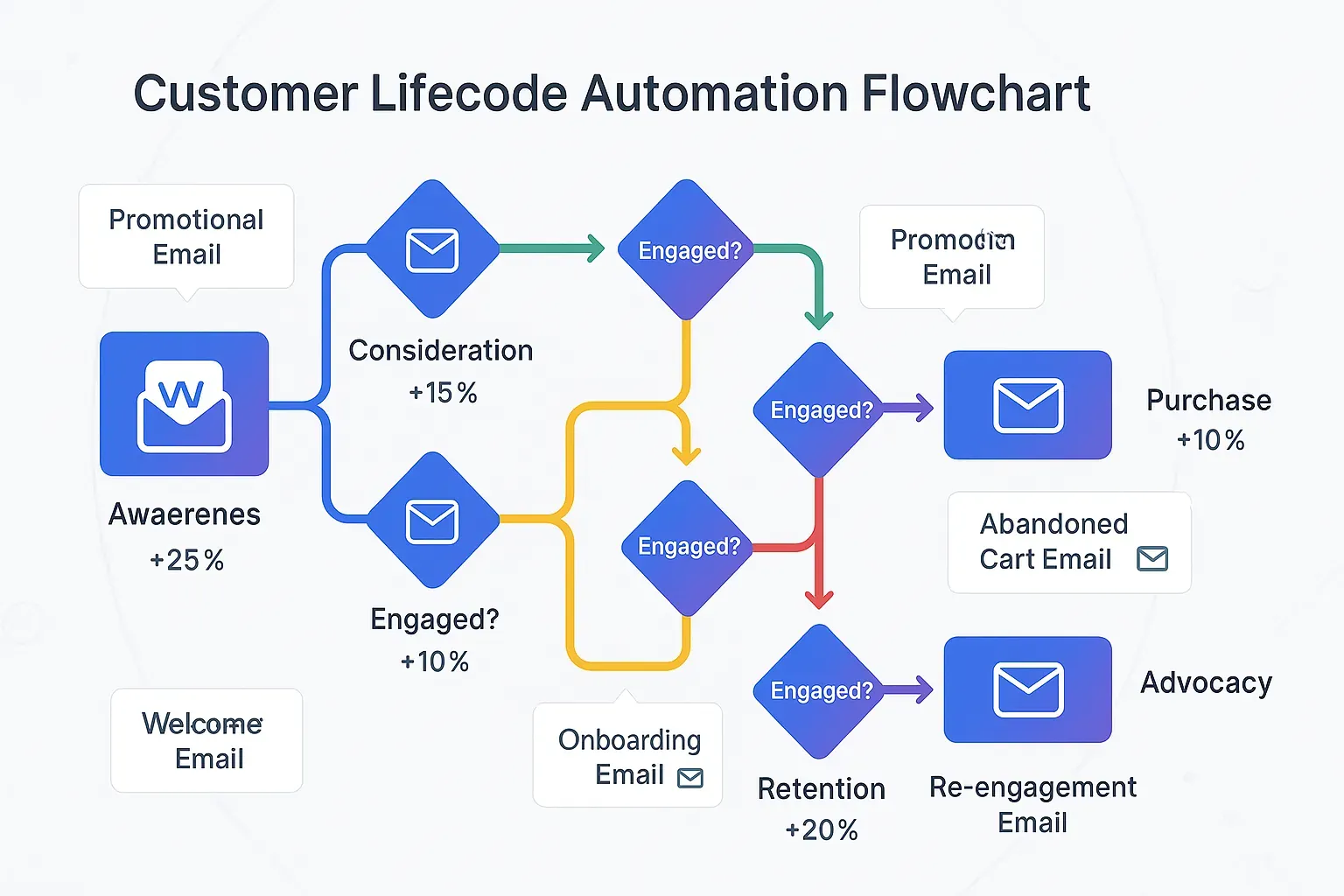
Advanced Segmentation Strategies for Maximum Impact
Segmentation transforms generic broadcasts into personalized conversations. Advanced segmentation goes beyond basic demographics to include behavioral patterns, engagement history, and predictive modeling.
Data-Driven Segmentation Approach
Primary Segmentation Criteria:
- Demographic Data: Age, location, job title, company size
- Behavioral Data: Purchase history, email engagement, website activity
- Psychographic Data: Interests, values, lifestyle preferences
- Engagement Patterns: Open rates, click patterns, time preferences
💰 Revenue Impact: Marketers using advanced segmentation report 760% increase in email revenue, with segment-specific campaigns generating 58% of all email marketing revenue according to DMA research.
Dynamic Segmentation Implementation:
Dynamic segments update automatically based on subscriber behavior and data changes. This real-time approach ensures message relevance without manual list management.
| Segment Type | Update Frequency | Performance Lift |
|---|---|---|
| Engagement-Based | Daily | 45% higher CTR |
| Purchase Behavior | Real-time | 67% increase in revenue |
| Content Preferences | Weekly | 32% improvement in opens |
| Lifecycle Stage | Triggered | 89% better conversions |
Groupmail's analytics dashboard provides the data visibility needed to create and optimize these advanced segments effectively.
Predictive Segmentation with AI
Artificial intelligence analyzes subscriber patterns to predict future behavior, enabling proactive campaign optimization. Predictive segments identify high-value prospects, churn risks, and optimal send times.
AI-Powered Segment Examples:
- Likely Purchasers: Subscribers showing buying signals within 7 days
- Churn Risk: Active subscribers displaying engagement decline patterns
- Upsell Candidates: Customers ready for higher-tier product offerings
- Brand Advocates: Users likely to share content and refer others
Implementing predictive segmentation requires consistent data collection and analysis. Start with basic behavioral tracking, then layer in advanced AI capabilities as your data matures.
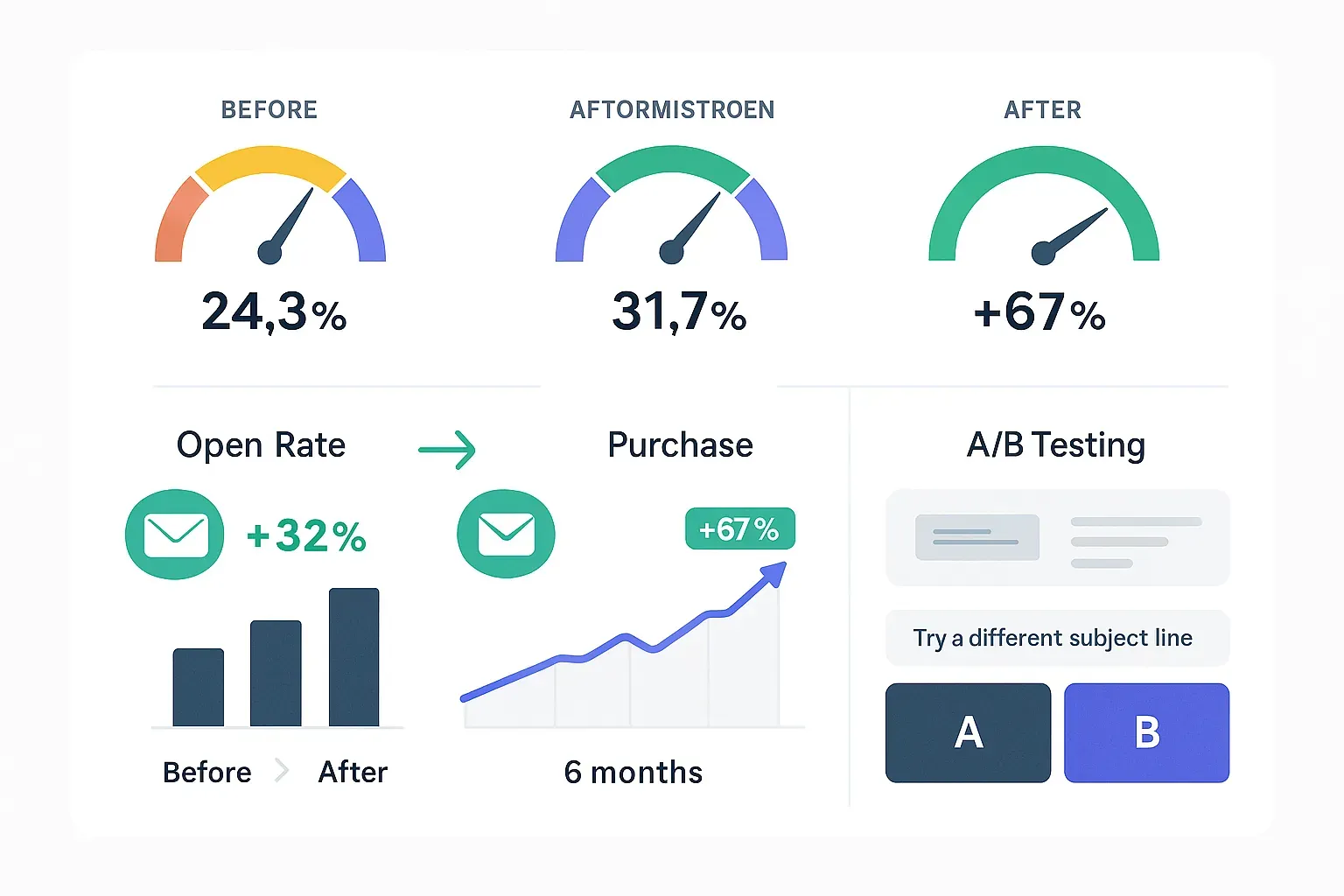
Creating High-Converting Email Automation Workflows
Workflow design determines automation success more than individual email quality. Effective workflows map to customer psychology, not arbitrary business goals.
The Psychology-First Workflow Framework
Stage 1: Attention Capture Your first email must immediately demonstrate value relevance. Subscribers decide whether to engage with your automation within 8 seconds of opening.
Essential Elements:
- Clear value proposition in subject line and preview text
- Immediate benefit delivery (download link, exclusive access, etc.)
- Expectation setting for future communications
- Mobile-optimized design for 68% of opens occurring on mobile devices
Stage 2: Interest Development
Subsequent emails build interest through education, social proof, and gradual value escalation. Avoid sales pitches during this crucial trust-building phase.
Content Strategy:
- Educational content addressing subscriber pain points
- Customer success stories and testimonials
- Behind-the-scenes content humanizing your brand
- Interactive elements encouraging engagement
💡 Pro Tip: The 80/20 rule applies to automation content—80% value-focused education, 20% promotional messaging for optimal performance.
Stage 3: Desire Creation Once trust develops, introduce your solution as the natural next step. Focus on transformation and outcomes rather than features.
Conversion Elements:
- Before/after case studies with specific metrics
- Limited-time incentives creating urgency
- Risk reversal through guarantees or trial periods
- Clear, singular call-to-action per email
Multi-Channel Integration Strategies
Modern automation extends beyond email to create cohesive cross-channel experiences. Integration with SMS, social media, and website personalization amplifies results dramatically.
| Channel Integration | Implementation Method | Performance Impact |
|---|---|---|
| SMS + Email | Trigger SMS for high-intent actions | 35% increase in conversions |
| Social Media Retargeting | Sync email segments with ad platforms | 48% lower acquisition costs |
| Website Personalization | Dynamic content based on email engagement | 23% higher session values |
| Push Notifications | Mobile app engagement coordination | 67% improvement in retention |
Groupmail's integration capabilities support connection with major marketing platforms, enabling seamless multi-channel orchestration.
Personalization Beyond First Names: Advanced Tactics
True personalization leverages data to create individually relevant experiences. Moving beyond basic name insertion requires sophisticated data utilization and content strategy.
Behavioral Personalization Implementation
Dynamic Content Insertion: Modern email platforms support conditional content blocks that display different elements based on subscriber data. This technology enables single template creation serving multiple audience segments.
Personalization Hierarchy:
- Basic: Name, location, company
- Intermediate: Purchase history, browsing behavior, engagement patterns
- Advanced: Predictive preferences, lifecycle stage, real-time triggers
- Expert: AI-generated content, dynamic product recommendations, individual send-time optimization
💰 Revenue Impact: Emails with personalized subject lines deliver 26% higher open rates, while campaigns using behavioral personalization see 19% increase in sales according to Experian research.
Content Personalization Strategies
Product Recommendation Engines: Automated product suggestions based on purchase history, browsing behavior, and similar customer patterns drive 35% of Amazon's revenue and can significantly boost email performance.
Implementation Framework:
- Collaborative Filtering: Recommendations based on similar customer behavior
- Content-Based Filtering: Suggestions matching previous purchase attributes
- Hybrid Approach: Combining multiple recommendation methods for optimal accuracy
Dynamic Content Examples:
- Location-based event invitations and store information
- Industry-specific content for B2B audiences
- Seasonal product recommendations based on purchase timing
- Abandoned cart recovery with related product suggestions
Groupmail's AI subject line generator demonstrates how artificial intelligence can enhance personalization at scale.
Advanced Data Utilization
Zero-Party Data Collection: Encourage subscribers to voluntarily share preferences through surveys, quizzes, and preference centers. This high-quality data enables sophisticated personalization while building subscriber trust.
Data Collection Methods:
- Progressive profiling through multiple touchpoints
- Interactive content like polls and quizzes
- Preference center optimization for granular control
- Behavioral tracking with transparent data usage
First-Party Data Activation: Website behavior, purchase history, and customer service interactions provide rich personalization opportunities when properly activated.
Optimization Techniques That Boost Performance by 40%+
Continuous optimization separates high-performing automation from average campaigns. Systematic testing and refinement compound improvements over time.
A/B Testing for Automation Success
Testing Framework for Automated Campaigns:
| Element to Test | Impact Level | Testing Duration |
|---|---|---|
| Subject Lines | High | 2-4 weeks |
| Send Times | High | 4-6 weeks |
| Email Content | Medium | 6-8 weeks |
| CTA Buttons | Medium | 3-4 weeks |
| Sender Names | Low | 8-12 weeks |
Advanced Testing Strategies:
- Multivariate Testing: Test multiple elements simultaneously for interaction effects
- Sequential Testing: Optimize elements in performance-impact order
- Cohort Testing: Compare automation performance across different subscriber groups
- Long-term Impact Testing: Measure lifetime value changes from automation modifications
💡 Pro Tip: Test one element at a time in automation sequences to isolate performance variables. Unlike broadcast campaigns, automation changes affect long-term subscriber relationships.
Performance Metrics That Matter
Primary KPIs for Automation Success:
- Revenue Per Email (RPE): Total automation revenue divided by emails sent
- Customer Lifetime Value (CLV): Long-term subscriber value attribution
- Engagement Progression: Subscriber movement through automation stages
- List Health Metrics: Deliverability and spam complaint rates
Advanced Analytics Implementation:
- Attribution Modeling: Understanding automation's role in conversion paths
- Cohort Analysis: Tracking subscriber behavior changes over time
- Predictive Analytics: Forecasting automation performance and optimization opportunities
Understanding campaign analytics becomes crucial for identifying optimization opportunities and measuring automation ROI effectively.
Deliverability Optimization
Automation success depends on inbox placement. Poor deliverability kills even the best campaigns before subscribers see them.
Deliverability Best Practices:
- List Hygiene: Regular cleaning of inactive and invalid addresses
- Engagement Monitoring: Tracking and responding to engagement pattern changes
- Authentication Setup: SPF, DKIM, and DMARC configuration for sender reputation
- Content Optimization: Avoiding spam triggers while maintaining engagement
Technical Implementation: Setting up reliable SMTP services ensures consistent delivery. Groupmail's integration with SendGrid and SMTP2Go compatibility provide enterprise-grade delivery infrastructure.
Common Email Automation Mistakes That Kill Results
Even experienced marketers make automation mistakes that drastically reduce performance. Learning from these common pitfalls prevents costly errors.
Over-Automation and Subscriber Fatigue
The Frequency Problem: Sending too many automated emails creates subscriber fatigue and increases unsubscribe rates. The average subscriber receives 121 emails per day, making frequency management crucial.
Solutions:
- Global Frequency Capping: Limit total emails per subscriber across all automations
- Priority Scoring: Ensure high-value emails take precedence over routine communications
- Engagement-Based Sending: Reduce frequency for low-engagement subscribers
- Preference Centers: Allow subscribers to control communication frequency
💰 Revenue Impact: Companies implementing frequency capping see 15% increase in email revenue despite sending fewer emails, according to Return Path research.
Generic Content in Automated Sequences
The Personalization Gap: Many businesses set up automation workflows but fail to customize content for different subscriber segments, resulting in generic experiences that fail to convert.
Common Mistakes:
- Using identical welcome series for all traffic sources
- Ignoring subscriber engagement levels in content selection
- Failing to update automation content based on seasonality or product changes
- Not accounting for customer lifecycle stage in messaging approach
Poor Trigger Logic and Timing
Timing Optimization Failures:
| Mistake Type | Impact | Solution |
|---|---|---|
| Immediate Send Overload | 23% higher unsubscribes | Implement strategic delays |
| Ignoring Time Zones | 31% lower engagement | Use subscriber location data |
| Fixed Send Times | 18% missed opportunities | Test optimal timing per segment |
| Trigger Conflicts | 45% deliverability issues | Implement trigger prioritization |
Trigger Logic Best Practices:
- Cooling Off Periods: Prevent multiple automations from overwhelming subscribers
- Exclusion Rules: Remove subscribers who've already converted or taken desired actions
- Progressive Triggers: Escalate messaging intensity based on engagement levels
- Exit Conditions: Clear rules for when subscribers should leave automation sequences
Technical Setup and Integration Issues
Common Technical Pitfalls:
- Incomplete tracking implementation leading to data gaps
- Poor mobile optimization affecting 68% of email opens
- Broken automation triggers causing sequence failures
- Inadequate spam filter testing resulting in deliverability problems
Prevention Strategies:
- Comprehensive Testing: Test all automation workflows before activation
- Cross-Device Optimization: Ensure consistent experience across devices
- Integration Monitoring: Regular checks of third-party tool connections
- Performance Audits: Monthly reviews of automation technical performance
Future Trends in Email Marketing Automation
Email automation continues evolving rapidly. Understanding emerging trends ensures long-term competitive advantage and platform preparation.
Artificial Intelligence Integration
AI-Powered Automation Capabilities:
- Predictive Send Time Optimization: AI analyzes individual subscriber patterns to determine optimal delivery times
- Content Generation: Automated creation of subject lines, email copy, and product descriptions
- Dynamic Segmentation: Real-time subscriber categorization based on behavioral analysis
- Performance Prediction: Forecasting campaign success before sending
The role of AI in email marketing extends beyond basic automation into sophisticated customer experience orchestration.
Interactive Email Technology
Emerging Interactive Elements:
- AMP for Email: Real-time content updates within email clients
- Interactive Polls and Surveys: Direct engagement without leaving the inbox
- Gamification Elements: Points, badges, and rewards integrated into email experiences
- Video Integration: Embedded video content improving engagement by 300%
Privacy-First Automation
Adaptation to Privacy Regulations: Modern automation must balance personalization with privacy compliance. Zero-party data collection and transparent data usage become competitive advantages.
Implementation Strategies:
- Explicit Consent Management: Clear opt-in processes for automation enrollment
- Data Minimization: Collecting only necessary information for automation goals
- Transparency Tools: Clear communication about data usage and automation logic
- Control Mechanisms: Easy options for subscribers to modify or exit automations
💡 Pro Tip: Businesses proactively implementing privacy-first automation practices see 23% higher subscriber trust scores and 18% better long-term retention rates.
Cross-Channel Orchestration
Integrated Experience Platforms: Future automation platforms will seamlessly coordinate email, SMS, push notifications, social media, and website personalization for cohesive customer experiences.
Development Areas:
- Unified Customer Profiles: Single view of customer across all touchpoints
- Channel Optimization: AI determines optimal communication channel per message
- Journey Mapping: Visual workflow builders spanning multiple marketing channels
- Real-Time Decisioning: Instant automation adjustments based on cross-channel behavior
Tools & Resources for Email Automation Success
Essential Email Marketing Platforms
Groupmail Features for Automation:
- Unlimited email sending capabilities for high-volume automation
- Drag-and-drop builder for professional template creation
- AI subject line generator for optimization at scale
- Comprehensive analytics for performance tracking
Platform Integration Resources:
- Getting started with Groupmail comprehensive setup guide
- Mastering the drag-and-drop editor for design optimization
- SMTP configuration guides for reliable delivery
Automation Strategy Resources
Educational Content:
Technical Implementation:
Advanced Automation Tactics
Specialized Strategies:
Frequently Asked Questions
What's the difference between email marketing automation and autoresponders? Email marketing automation encompasses sophisticated, behavior-based campaigns with dynamic content and complex triggering logic. Autoresponders are simple, time-based email sequences. Modern automation platforms offer advanced segmentation, personalization, and cross-channel integration that autoresponders cannot provide.
How many emails should be in an automated sequence? Optimal sequence length depends on your goals and audience. Welcome series typically perform best with 3-5 emails over 2 weeks. Sales sequences may require 7-12 touchpoints over 30-45 days. Monitor engagement rates—if opens and clicks decline significantly after certain emails, consider shortening your sequences.
When should I start using email marketing automation?
Begin automation as soon as you have 100+ subscribers and consistent traffic sources. Start with basic welcome sequences and abandoned cart recovery, then expand to behavioral triggers and lifecycle campaigns. Early implementation allows you to optimize based on actual subscriber behavior rather than assumptions.
How do I measure email automation ROI effectively? Track revenue per email (RPE), customer lifetime value attribution, and conversion rates by automation type. Use UTM parameters for precise tracking and implement multi-touch attribution models. Compare automated campaign performance to broadcast emails and measure long-term subscriber engagement improvements.
What's the biggest mistake businesses make with email automation? Over-automation without proper frequency capping leads to subscriber fatigue and higher unsubscribe rates. Many businesses also fail to update automation content regularly, resulting in outdated messaging that damages brand perception. Focus on subscriber experience over automation quantity.
How often should I update my email automation workflows? Review automation performance monthly and update content quarterly. Major workflow changes should happen 2-3 times per year based on business goals, seasonal factors, and performance data. However, continuously test individual elements like subject lines and CTAs for ongoing optimization.
Can small businesses compete with enterprise automation strategies? Absolutely. Small businesses often achieve better automation results because they can implement changes quickly and maintain closer customer relationships. Focus on personalization and authentic communication rather than trying to match enterprise complexity. Tools like Groupmailprovide enterprise features at small business prices.
How do I avoid my automated emails going to spam? Maintain list hygiene, use proper authentication (SPF, DKIM, DMARC), avoid spam trigger words, and monitor engagement rates closely. Send from consistent sender names and addresses, provide clear unsubscribe options, and gradually warm up new automation campaigns rather than immediately sending high volumes.
Start Building Your Email Automation Success Story
Email marketing automation represents the single most impactful investment for scaling customer relationships and revenue growth. The strategies, frameworks, and tactics outlined in this guide provide everything needed to implement world-class automation systems that deliver measurable results.
💡 Key Takeaway: Success in email automation comes from treating it as a complete customer experience system rather than isolated marketing messages. Focus on subscriber value, systematic optimization, and long-term relationship building for sustainable growth.
Your Next Steps:
- Audit Current Automation: Evaluate existing campaigns against the frameworks presented
- Implement Advanced Segmentation: Move beyond basic demographics to behavioral triggers
- Optimize for Mobile: Ensure flawless mobile experience for 68% of opens
- Test Systematically: Establish consistent A/B testing protocols for continuous improvement
- Monitor Performance: Track revenue per email and customer lifetime value attribution
The automation landscape will continue evolving, but businesses focusing on subscriber experience, data-driven optimization, and authentic personalization will consistently outperform competitors regardless of technological changes.
Start creating professional automated email campaigns with Groupmail's free account—no credit card required. Access unlimited sending, drag-and-drop design tools, and our AI subject line generator to implement these strategies immediately.


